MUSIC IN THE CHAPEL OF THE POPES IN AVIGNON IN THE XNUMXth CENTURY
By Nicolas Sansarlat and Antoine Guerber
Together Diabolus In Musica (Towers)
In the Middle Ages, the liturgy was music, expressed in two different forms: the plain chant, ritual music that does not exist for its own sake but for its pure spiritual function, and the polyphony which testifies to a more social, artistic and professional practice. The conflict between these two uses, revealed by the famous bull of Pope John XXII which manifests an ultimate stiffening in the face of new practices, quickly turns to the absolute and definitive triumph of polyphony from the pontificate of Clement VI (1342-1352). The chapel became independent, became more professional and the papal model spread throughout Europe, starting with the great French and English princely courts.
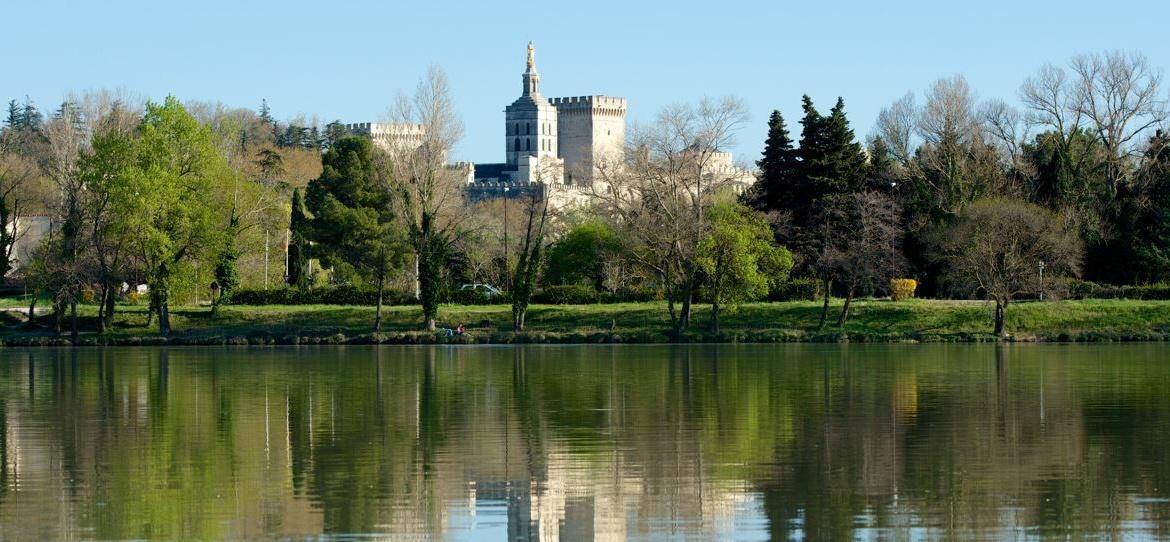
The traveler who arrives in Avignon from the west, coming from Villeneuve-lès-Avignon and crossing the Rhône, is struck nowadays, as probably in the Middle Ages, by one of the most beautiful urban landscapes in France: the imposing mass of the Palace of the Popes dominates the old city collected at the foot of the rock of the Doms and enclosed in the crenellated ramparts built by Urban V. This traveler cannot fail to wonder about the reasons for the existence in this average city of the most imposing medieval palace of our heritage.
For a little less than a century, the Christian world had its eyes turned towards Avignon, because French popes resided there from 1309. Its wealth, its splendours, its places of power attracted kings, princes and greatest artists of the century. Populated with 5 to 6 inhabitants on the arrival of Clement V, Avignon was to become in a few years the second largest city in France behind Paris. There is talk of 100 foreigners in the papal city in the middle of the century… It is therefore easy to understand the frenzy of construction that took hold of the city, which never came to the end of the shortage of necessary housing: bourgeois houses, churches, convents, cardinals' liveries and of course the Palace of the Popes, upset the physiognomy of Avignon and its immediate surroundings. We also understand the anathemas launched by Petrarch, who castigates the “captivity of Babylon”, against the excesses of life in the Rhone city.
After his coronation in Lyon in 1305, and his return to his native lands in Guyenne, purely political circumstances led to Clement V (Bertrand de Got) to come and settle, he thought temporarily, in the Comtat Venaissin, papal land near Avignon, thus continuing the tradition of the itinerant papacy of the XNUMXth and XNUMXth centuries (several popes of the XNUMXth century never came in Rome because it was not the political and administrative capital of the Church). “Ubi papa, ibi Roma”: where the pope is, there is the seat of Christianity. Philippe le Bel, who had favored the election of this pope of Gascon origin and who always kept a strong influence on him, had pushed him to settle in a region where he could exercise his authority much more easily than in Italy, unstable and shaken by numerous political crises. The Church will be throughout this century a place of power struggle between the different sovereigns of Europe and will reveal the importance and then the decline of French predominance. It was the same unrest within the Papal States that delayed the return of the last French pontiff. Gregory XI, in 1376-77 in the city of which he was also the bishop: Rome.
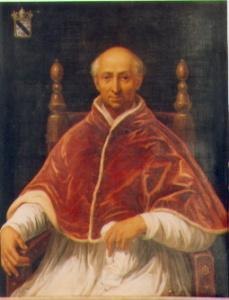
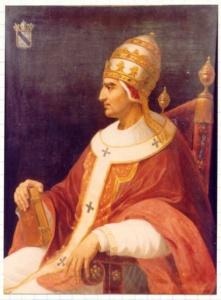
As long as the influence of the successive kings of France knew how to be very significant within the college of cardinals, that is to say almost throughout the XNUMXth century, French popes were elected to the highest office. Very contrasting personalities succeeded one another in the Holy See. From the authoritarian John XXII (the cahourcin Jacques Duèse) to the obstinate Benedict XIII (the Aragonese Pedro de Luna) who refused to abdicate until his death in exile at the age of 95, while the great kings of the Christian world had long since resolved to finally put an end to the Great Schism. The austere Cistercian Benedict XII, for example (the Gascon Jacques Fournier), great slayer of Catharism, was succeeded by the brilliant, the sumptuous Clement VI known as the “Magnificent” (the Limousin Pierre Roger) who transformed the Curia and the palace of its predecessor into one of the most dazzling courts in Europe, making Avignon the capital of Arts and Letters. The points in common between these various French popes were on the one hand very strong ties with the kings of France, diplomatic and political ties which often did not exclude a certain friendship, and on the other hand an “absolute nepotism”, which saw each sovereign pontiff, with the notable exception of Benedict XII, systematically appoint members of his family to the positions of cardinals or important officers of the curia.
These colorful characters went through a particularly rich century of fundamental evolutions, upheavals and dramatic events, which ended in the confusion of the Great Schism. The Great Black Death of 1348, originating in Marseilles, is widely known. In Avignon, it was, alas, only the first of a long series (1348, 1361, 1397, 1406). France had 20 million inhabitants in 1328, as at the end of the 10th century, but only 1450 million in XNUMX! Incessant and deadly wars were indeed added to the scourge of the plague.
At the end of the XNUMXth century, the nobility, penniless by these ruinous wars, no longer really played its role traditionally protecting the population and even seemed to take refuge in a sort of headlong rush into luxury and pleasures.. XNUMXth century musice century is of course the reflection of this world and these troubled times, of this society which is becoming secularized. The very foundations of medieval thought, which describes the world as a mirror of universal harmony, are upset by a real scientific revolution which begins to reason without the help of faith. And it is of course during this century that the individual expression of the artist is strongly personalized by seeking to free itself from traditional canons.
Our program (Editor’s note: “Cantores”, by Diabolus in Musica) is very closely linked to a prestigious and relatively well-preserved building: the Palace of the Popes, built mainly under Benedict XII and Clement VI, and in particular the chapel dedicated to the apostles Peter and Paul (Grande Chapelle Clémentine) in which all the solemn liturgies were concentrated.
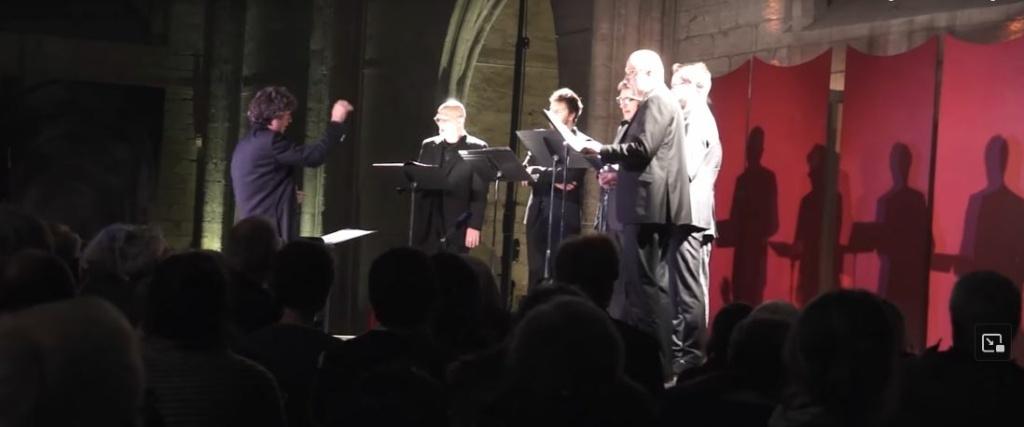
Many other places of worship existed in the palace, which had six chapels and many large rooms capable of receiving portable altars. You have to imagine the immense and empty places that we can visit today as they could be in their heyday. The furniture there was luxurious; on feast days, the walls were largely covered with richly decorated hangings and tapestries, revealing the sumptuous pictorial decor that we can still admire today in places. On certain important occasions, the crowd followed the many processions and was allowed to attend the liturgies. We then crowded to better see the richly decorated vestments of the cardinals, the brilliant decorations adorning the altar and the choir, the magnificent papal cathedra behind the altar, and to listen to the extraordinary and new polyphonic compositions of the cantors, housed in their enclosure. particularly to the east of the Grande Chapelle.
By the 1330s, the Church was collecting its income very efficiently, which was not the case in the previous period, and the treasure chests were filling up quickly. It is difficult to imagine the very un-evangelical luxury of the Avignon curia. If it may seem shocking to us today, we must recognize that the Palais des Papes quickly became a fundamental artistic center, ideally placed halfway between Rome and Paris, for which worked, and in which lived the greatest artists of that time: musicians, painters, poets, sculptors, architects... Artists from northern Europe learned the art of Italian frescoes and miniatures there, while Italian artists became familiar with sculpture and the architecture of northern Europe. At the beginning of the reign of Clement VI, for example, five men among the most brilliant figures of the century, the musician Philippe de Vitry, the painter Matteo Giovannetti, the poet Petrarch, the astronomer Johannes de Muris and the mathematician Lévi Ben Gerson, had undoubtedly very fruitful discussions together!
Within the curia, “the papal chapel” is an institution created by Benedict XII in 1334 to replace the “Schola cantorum” Roman, who did not follow the pope in his many travels. From the outset, it included 12 chaplains, a number that varied little, not to be confused with the “commensal” chaplains, high-ranking dignitaries sharing the pope's meal, often advisers or high officials of the curia. This group of singers will acquire considerable fame during the XNUMXth century and this light will later attract the musicians Dufay, Agricola, Josquin….
If the painters chosen for the decoration of the palace were mainly Italian, the clerics called upon to participate in the chapel came for the vast majority of them from the north of France. Clement VI, in particular, took up an already established practice and institutionalized a tradition that would last more than two centuries, thus explaining the strong French influence now exerted on the papal liturgy, which until then had been very Roman.
These chaplains were the best singers in the western world. The pope did not hesitate to recruit them from the chapters of the great cathedrals or from the private chapels of cardinals and kings. Hired to sing the masses and the canonical hours, they were also often composers of sacred as well as secular music, and very probably had to participate in the entertainments at the end of the meal of the pontiff and his distinguished guests, by singing their motets. In the name of very strict respect for the rule prohibiting the Curia from any mixture of sacred and profane domains, the pope could not have minstrels in his private service, but his chaplains and the musicians of his hosts made up for this lack. THE "gay pope who will happily and sweetly listen without desplaysance” described in a virelai of the Chantilly manuscript, is probably Clement VII (Robert of Geneva), a lover of extraordinary festivities, of which we know, moreover, that he sang remarkably.
His pontificate at the end of the century represents the pinnacle of Avignon splendor. The Vatican archives have fortunately been preserved and it is moving for us to know very exactly the names of all the chaplains and their “magister” who succeeded each other at the Palais des Papes. The very precise accounts also indicate to us the high degree of wealth that their function enabled them to reach at the end of the century. THE "singers” of the XNUMXth century give the impression of a very closed caste, of a solidarity brotherhood of a very high artistic and intellectual level, and which is moreover strongly aware of it. Contacts between chaplains of the different chapels were numerous and the directories seem to have circulated much more than was first thought.
This remark is particularly valid for the main genre that concerns us here: the polyphonic mass.. The habit of singing the Ordinary of the Mass in polyphony will develop considerably in the second half of the century, on the initiative of the papal chapel. The repertoire of the School of Notre Dame in the XNUMXth century already included a few short texts (Kyrie, Sanctus and Agnus) put into polyphony, but the composers of the XNUMXth century generalized this practice and were especially interested in Gloria et Credo whose longer texts allow them to innovate more.
At the end of the century, the polyphonic mass had become a very important genre which would quickly spread from its almost unique center of creation: the papal chapel.. The manuscripts that transmit this mass music to us almost all come indirectly from the chapel, even if many of the pieces copied and transmitted in Avignon may in fact have been created elsewhere. The habit then was to choose, for a given day, the different pieces of the ordinary that it was appropriate to sing, without real musical relations between them, but the concern to give a unity which is not only textual is done day gradually. So we proceeded in this way to “compose” the two masses of the program: one with 3 voices and a second which includes movements with 4 voices. The masses of Tournai, Machaut, Toulouse and Barcelona are early exceptions, and the mass on cantus firmus unique will only appear in the XNUMXth century, with Guillaume Dufay.
John XXII, in 1324-1325, rose well against the abuses of the young composers of the new school (Ars Nova), who introduced hiccups and short notes into their chants, and above all, like his two predecessors, against the risks of secularization of sacred chant, but the situation changed radically in 1342 when Clement VI began to systematically recruit the best cantors from the north of the France. From this precise date, the polyphonic ordinary is attested in the papal chapel, but it must have been present there during major feasts for a long time already. At the end of the century, polyphony was authorized at Mass for all liturgical time except for the time of the Passion, that is to say approximately 50 weeks, and this even in the absence of the pope! On the other hand, there is no polyphonic music for the canonical hours. The singers certainly had to improvise polyphonically on plainsong.
The rule always respected in the papal chapel was solo singing a cappella, although the numbers made it possible to double the votes, and this possibility was no doubt sometimes exploited. The first mention of an organ concerns the chapel of the anti-pope in exile Benedict XIII, at the beginning of the XNUMXth century. Similarly, the voices of boys, which are beginning to be used in the chapels of cardinals, are strictly prohibited in the service of the sovereign pontiff.
The composers of polyphonic ordinaries simply used and developed the three main styles in force at their time:
- the style leads: homophony undoubtedly related to improvised polyphony more than to the School of Notre-Dame, but which can integrate all the audacious novelties of theArs Nova.
- the motet style: as in the XNUMXth century, with a liturgical content or not, serves as a support for one or two upper voices provided with often different texts.
- the cantilena style: under the “instrumental carpet” that the lower voices unroll for it, a single voice has a text, in imitation of rondos, virelais, profane ballads, but without a chorus.
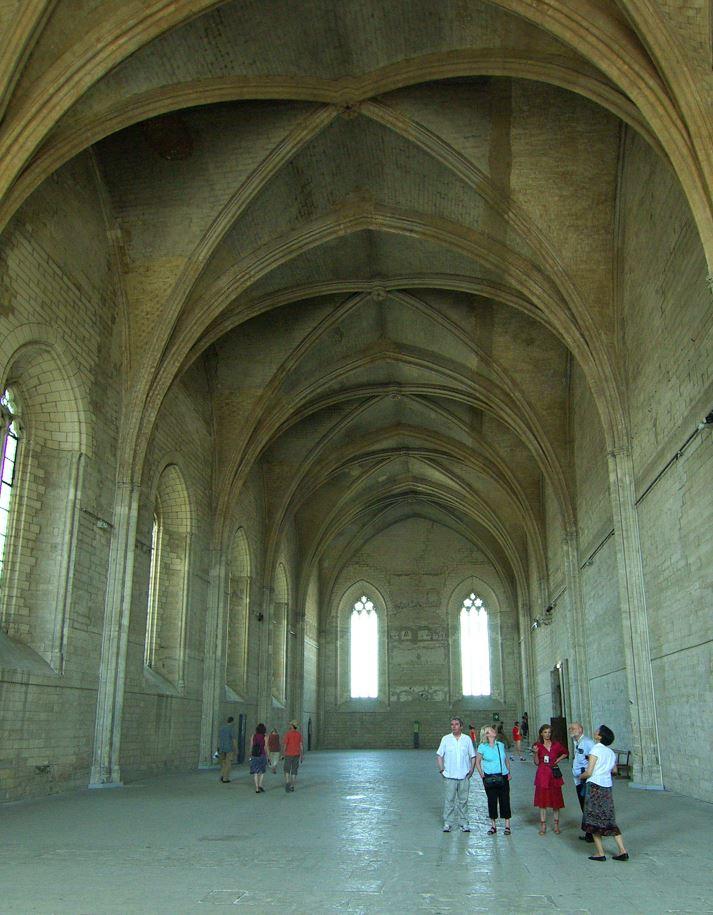
The first liturgical chant KYRIE – ORBIS FACTOR is then used in tenor to determine the structure of the Kyrie Angelorum from mass at 3, piece treated as a double motet. Between the two Masses of the program, we sing a hymn, a motet, and a led motet.
FIRMISSIME FIDEM – ADESTO, SANCTA TRINITAS – ALLELUYA: motet for 3 voices by Philippe De Vitry in honor of the Holy Trinity. The spectacular hiccup is not used here but Vitry's talent and originality work wonders with in particular a melodic sense, of the phrasing of each of the 2 upper voices very neat.
DEUS IN ADJUTORIUM – DEUS IN SE NOTUS: anonymous 4-voice motet-conduit. It is in fact a reuse of a 3-voice motet from the 4th century with a XNUMXth voice added above, the lyrics of which paraphrase the text " Deus in adjutorium… » which begins the Hours of the Office and thus gives an unusual musical breadth and a wide range to the simple opening duct.
Nicolas SANSARLAT & Antoine GUERBER
To venture even further...
CANTORES by DIABOLUS IN MUSICA
Concert filmed in October 2016 at the Palace of the Popes in Avignon.
Distribution:
Raphael Boulay: tenor
Olivier Germond: tenor
Jérémie Arcache: baritone
Romain Bockler: baritone
Emmanuel Vistorky bass-baritone
Philippe Roche: bass
Artistic direction :
Antoine Guerber
